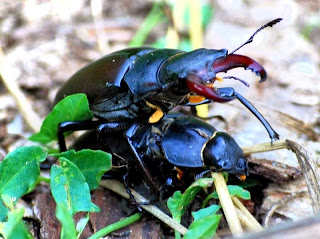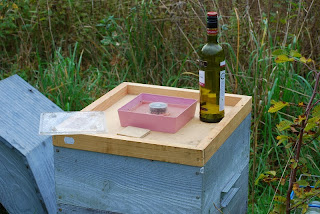It may be 2013 but here in La France Profonde there are
still shops that close for 2 hours or even more at lunch time. Then when they
open you may well wonder why you bothered waiting because in many instances
they don’t actually have what you want or perhaps they have it but it’s 5 times
the price you can buy it for from the UK.
Anyway, before I start moaning the point is that I spent about
45 minutes poking around by the river Charente near to
Civray waiting for a shop to open. This wasn’t likely to be exciting in mid
December but you never know what may turn up and it’s a lovely river. The
alternative for killing time would be to look at Estate Agents windows or
wander round LIDL and even I’m not that sad.
It’s a spot near a sluice where there are always
one or two Grey Wagtails, Motacilla cinerea, (note to self to have
a look for nesting activity in Spring-time), and sure enough there was one
there on the bank-side – always a welcome sight. The river here can be quite
varied in nature, extremely fast flowing following heavy or prolonged rainfall
or be almost as still as a lake during dry spells.
Above - looking upstream.
Location of the river site just below the "v" in Civraisien.
On these upper reaches of the River Charente
there are numerous weirs / sluices that obstruct the free movement of both
boats and fish so I was somewhat surprised to discover large collections of
shells in the shallows and some on the land as well. Of course shells in
themselves wouldn’t be a particular surprise but these were Corbicula fluminea, the Asian Clam.
First detected in France
around 1980 they feed primarily on phytoplankton (algae), which they filter
from the sandy or muddy bottom of streams, lakes, or canals. They self
fertilise and somewhat scarily can produce between 34,500 and 47,500
individuals in a season, hence within 20 years they had colonised most French
rivers, some lakes and a large number of canals. Along with various human means
of being spread it seems likely they are transported when very small by being
stuck to birds’ feet.


They will be taken for food by Musk rats, (another
introduced nuisance species), and possibly by some birds although this would be
unlikely in most river situations. Musk rats also take native species of
freshwater mussels / clams as can be seen by these other shells in the photo
below of what I think possibly are Potomida
littoralis, Mulette des rivières., one of the more common river mussel
species in western France.

The freshwater mussel begins life as a tiny larva, measuring
just 0.6 to 0.7 mm long, which is ejected into the water from an adult
mussel in a mass along with one to four million others. This remarkable event
takes place over just one to two days, sometime between July and September. The
larvae, known as glochidia, resemble tiny mussels, but their minute shells are
held open until they snap shut on a suitable host. The host of the mussel
larvae are juvenile fish. The chances of a larva encountering a suitable fish
are very low and most will die. Attached to the gills of a fish, the glochidia
live and grow in this oxygen-rich environment until the following May or June,
when they drop off. The juvenile must land on clean gravely or sandy substrates
if it is to successfully grow. Attached to the substrate, juvenile freshwater
mussels typically burrow themselves completely into the sand or gravel, while
adults are generally found with a third of their shell exposed. Should they
become dislodged, freshwater pearl mussels can rebury themselves, and are also
capable of moving slowly across sandy sediments, using their large, muscular
foot.

Life cycle freshwater mussels
Chris

.jpg)





































.jpg)








